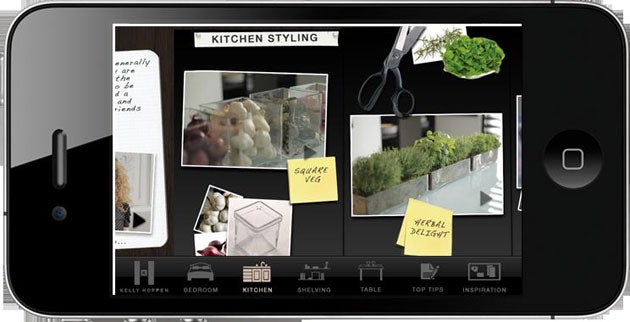The interiors industry moves online
Will new technology help the world of interiors catch up with that of fashion and music?

Your support helps us to tell the story
From reproductive rights to climate change to Big Tech, The Independent is on the ground when the story is developing. Whether it's investigating the financials of Elon Musk's pro-Trump PAC or producing our latest documentary, 'The A Word', which shines a light on the American women fighting for reproductive rights, we know how important it is to parse out the facts from the messaging.
At such a critical moment in US history, we need reporters on the ground. Your donation allows us to keep sending journalists to speak to both sides of the story.
The Independent is trusted by Americans across the entire political spectrum. And unlike many other quality news outlets, we choose not to lock Americans out of our reporting and analysis with paywalls. We believe quality journalism should be available to everyone, paid for by those who can afford it.
Your support makes all the difference.A new report, commissioned by Google, has found that the UK has the most developed internet economy in the world with the largest online e-commerce market per person. But where does the interiors industry fit into this boom?
This week, a discussion taking place at the launch of Kelly Hoppen’s first iPhone app, Home Style, will aim to address this subject by examining ‘Why the online world of interiors is behind that of fashion and music and how it can catch up.’
While the music industry continues to lead the charge in the digital revolution with most music now distributed and consumed online, the fashion industry is not far behind. This year, as the high street continued to flounder, online fashion site ASOS reported a 44 per cent rise in profits. Nick Robertson, chief executive of the site, said that the shift towards internet shopping among young fashion consumers was “bigger than the economic cycle.” So why hasn’t the interiors industry been similarly transformed?
According to Hoppen, the interiors industry has been slow to embrace new technology online in the way that the fashion and music industries have. But, she says, it is catching up. “Previously, the technology available wasn't necessarily pivotal in the interior world,” she comments, “but, with new hardware and motion sensitive touch screen, it makes it easier for people to visualise designing a room or property. New technology enables you to take a picture of a room in 3D and play with colour schemes, etc. In this respect, I can see how technology online is going to be paramount when it comes to the design process moving forward.”
By embracing online technology and launching an app such as Home Style, Hoppen hopes to help consumers leading increasingly busy lives plan and improve their home. Home Style, she says, makes it “so easy to learn tips on the go and execute them in the home by making simple and elegant touches.”
Hoppen is not the only one within the interiors industry who is embracing new technology. Earlier this year, mydeco.com launched a new augmented reality iPhone application, Furnish Your Photo. This enables users to choose from hundreds of 3D models of furniture, add them to a photo of their room and visualise, on the move, how a new sofa, table or lamp will look in situ before they buy.
Meanwhile, this month, Bensons for Beds has also launched an app, which it hopes will help guide consumers through the bed-buying process and achieve a better night sleep. “Modern technology is dictating how people research information and products,” says Simon Williams, marketing manager for Bensons. “A survey by eDigital Research showed that a third of smartphone users browsed retailing sites on their phones for research or to make a purchase. Over a quarter of those sampled had downloaded shopping apps for their phones and 56% of this segment had used these apps to make a purchase.
“As a forward thinking company, we decided it was a great opportunity to be the first major UK bed retailer to develop an iPhone app that is not just a fun interactive tool but also provides serious, practical information for the new generation of online shoppers to help them choose their ideal bed.”
While mobile applications allow the interiors industry to exploit new touch screen technology and tap into consumers buying on the move, Web 2.0 should be an essential part of its marketing strategy. “The industry as a whole needs to be more open-minded and embrace things like social networking as well as blogging and streaming,” says Hoppen. “Education and understanding of the ever-evolving technology is key.”
Emily Jenkinson is interiors writer for furniture and interior design website mydeco.com.
Join our commenting forum
Join thought-provoking conversations, follow other Independent readers and see their replies
Comments